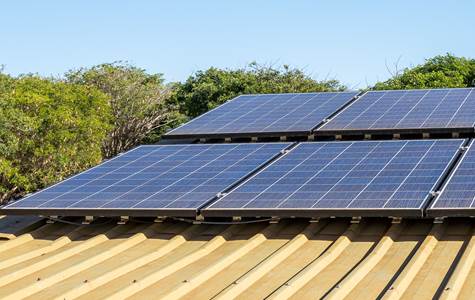New DER Technical Requirements
We’re working hard to fix the hosting capacity constraints and make solar available to more of our communities. The good news is, we're planning to release more capacity across many of our currently constrained towns over the next 12 months.
To facilitate hosting capacity increases, and to accommodate the transition to the new Australian Standard AS4777.2:2020, Horizon Power will shortly be updating its Technical Requirements for connection of DER systems.
The new Technical Requirements have been finalised and are available below - these come into effect on 18 December 2021.
What happens next?
Horizon Power is seeking industry feedback on the new Technical Requirements. Feedback may be emailed to renewables@horizonpower.com.au up until Monday 15 November.
Technical information forum
Horizon Power hosted an industry technical forum on Thursday 4 November. This was an opportunity to understand more about these changes and provide your feedback.
If you were unable to make it, please see below for a copy of the presentation and a recording of the session.
Requirements for new systems
In the meantime, please be aware of the following requirements in relation to transition to the new rules, and some immediate requirements for new systems:
Immediate requirements for all renewable energy systems
As part of the installation of a renewable energy system, the inverter firmware should be updated to the latest available firmware.
- Inverters that are already compliant with the new AS4777.2:2020 standard must be configured to ‘Australia Region C’ settings.
- For Inverters that are not compliant with AS4777.2:2020 but may be brought up to the new AS4777.2:2020 standard by updating the firmware, these inverters must have their firmware updated and be configured to ‘Australia Region C’ settings.
Updates to the latest firmware, and the use of the ‘Australia Region C’ settings will simplify the process of entering the required inverter settings.
Approval requirements - from 18 December 2021
As of 18 December 2021, Horizon Power will only accept applications for systems compliant to the new Technical Requirements, and AS4777.2:2020 (for Basic EG and LV EG connections).
Horizon Power uses the CEC inverter list and inverters must be accredited with the CEC. These inverters must be configured to ‘Australia Region C’ settings.
To facilitate the transition and processing of applications, Horizon Power will cease accepting applications with AS4777.2:2015 inverters from 10 December 2021.
Approval requirements - before 10 December 2021
Applications approved before 10 December 2021 with older AS4777.2:2015 compliant inverters can be installed after 10 December 2021 but must be installed and commissioned within three months of the date of application.
Any installation of an approved AS/NZS 4777.2:2015 after 18 December must be compliant with the inverter settings in the new Technical Requirements (‘Australia Region C’ settings).
Eligibility criteria: small-scale technology certificates and large-scale generation certificates
Compliance with AS/NZS 4777.2 current version is part of the Clean Energy Regulator (CER) eligibility criteria. With changes to the standard, the affected installation should refer to the regulations for eligibility criteria for these certificates, as provided by the Clean Energy Regulator on their website.
Horizon Power approval of an installation may not meet the eligibility criteria of CER. This is the responsibility of the user and supplier/installer to manage.
Can I still install a warranty replacement?
An inverter compliant with an earlier version of AS/NSZ 4777.2 can be replaced under warranty where:
- The replacement inverter is the same make and model (like-for-like).
- The replacement is for warranty purposes.
- The inverter is set up to comply with the existing connection agreement.
Where the above requirements are not met, an AS/NZS 4777.2:2020 inverter compliant with the latest standards will be required.
